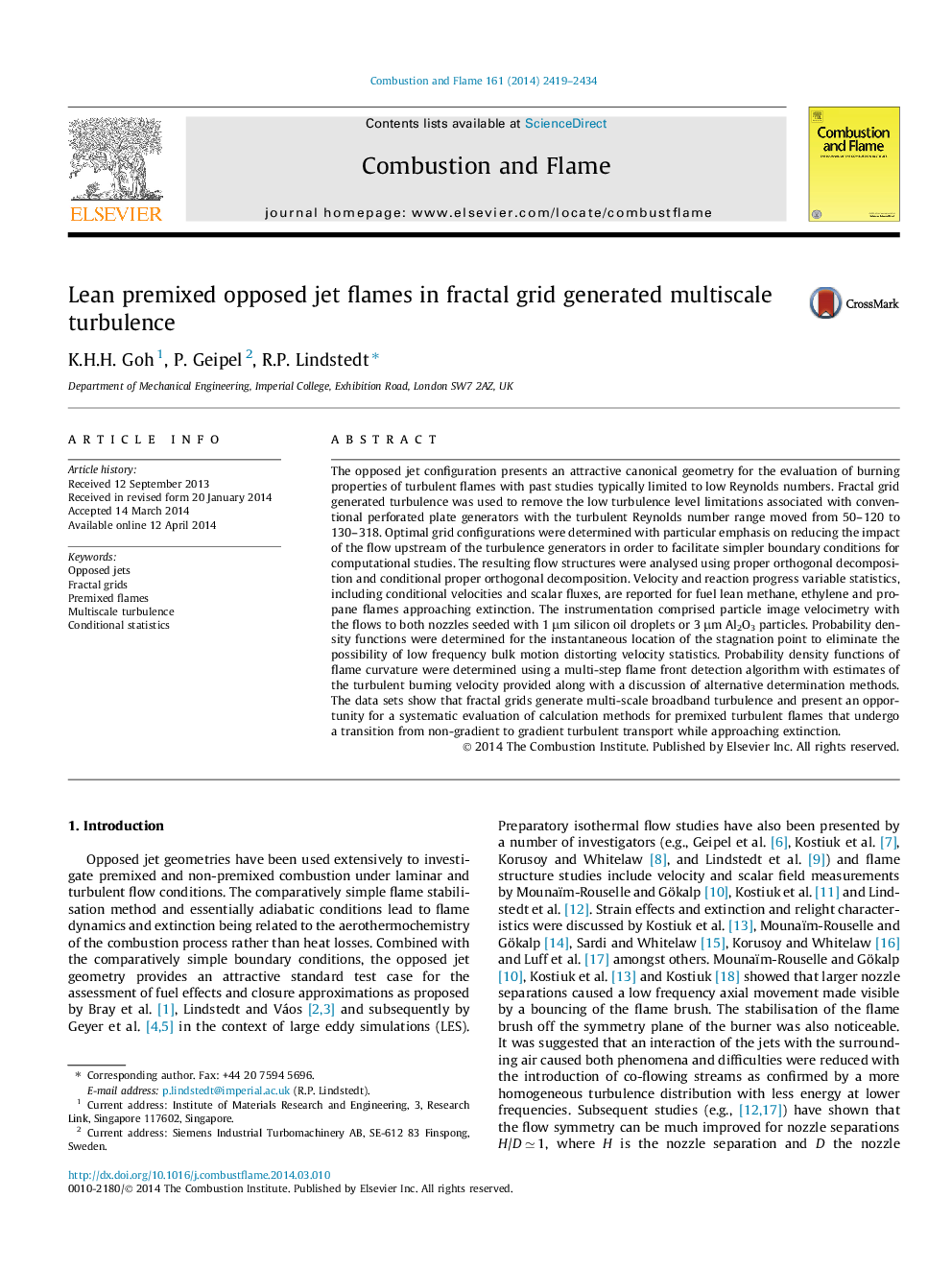| Article ID | Journal | Published Year | Pages | File Type |
|---|---|---|---|---|
| 168564 | Combustion and Flame | 2014 | 16 Pages |
The opposed jet configuration presents an attractive canonical geometry for the evaluation of burning properties of turbulent flames with past studies typically limited to low Reynolds numbers. Fractal grid generated turbulence was used to remove the low turbulence level limitations associated with conventional perforated plate generators with the turbulent Reynolds number range moved from 50–120 to 130–318. Optimal grid configurations were determined with particular emphasis on reducing the impact of the flow upstream of the turbulence generators in order to facilitate simpler boundary conditions for computational studies. The resulting flow structures were analysed using proper orthogonal decomposition and conditional proper orthogonal decomposition. Velocity and reaction progress variable statistics, including conditional velocities and scalar fluxes, are reported for fuel lean methane, ethylene and propane flames approaching extinction. The instrumentation comprised particle image velocimetry with the flows to both nozzles seeded with 1 μm silicon oil droplets or 3 μm Al2O3 particles. Probability density functions were determined for the instantaneous location of the stagnation point to eliminate the possibility of low frequency bulk motion distorting velocity statistics. Probability density functions of flame curvature were determined using a multi-step flame front detection algorithm with estimates of the turbulent burning velocity provided along with a discussion of alternative determination methods. The data sets show that fractal grids generate multi-scale broadband turbulence and present an opportunity for a systematic evaluation of calculation methods for premixed turbulent flames that undergo a transition from non-gradient to gradient turbulent transport while approaching extinction.
